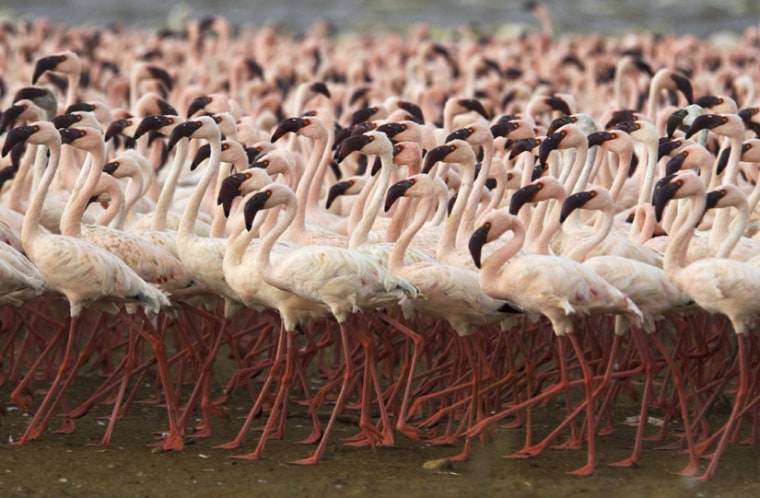Birds of a feather sure do like to dance together.
These lesser flamingos (Phoeniconaias minor) are performing a ritualized dance at Lake Bogoria in Kenya. Together, the flamingos will march with perfect posture, shifting their heads in unison from side to side. As the dance continues, the tempo increases and more birds begin to join the group.
Eventually, pairs begin to form, which is evident when two birds touch beaks. When two flamingos are brought together, they often mate for life, which could be as long as 50 years in the wild.
Why these birds go to such lengths to find a mate is still a bit of a mystery. However, the dance isn't unique to this particular species. All flamingos perform some form of this same ritual.
Although they are the smallest birds within the Flamingo genus, standing at around 40 inches tall and weighing around 4.5 pounds, these noisy, social animals gather in massive colonies — the largest of which claims some 2.5 million members.
Like other types of flamingos, adults of this species appear to be pale pink. However, when chicks are hatched, they have gray feathers.
How did the birds develop their pink feathers? The answer may surprise you.
These flamingos rely on algae as a food source, which they suck in by holding their heads underwater and filtering the micro-organisms with their tongues.
Although the algae is blue-green, they contain pigments similar to those that make leaves on trees change colors in the autumn, causing the birds to eventually turn pink.
